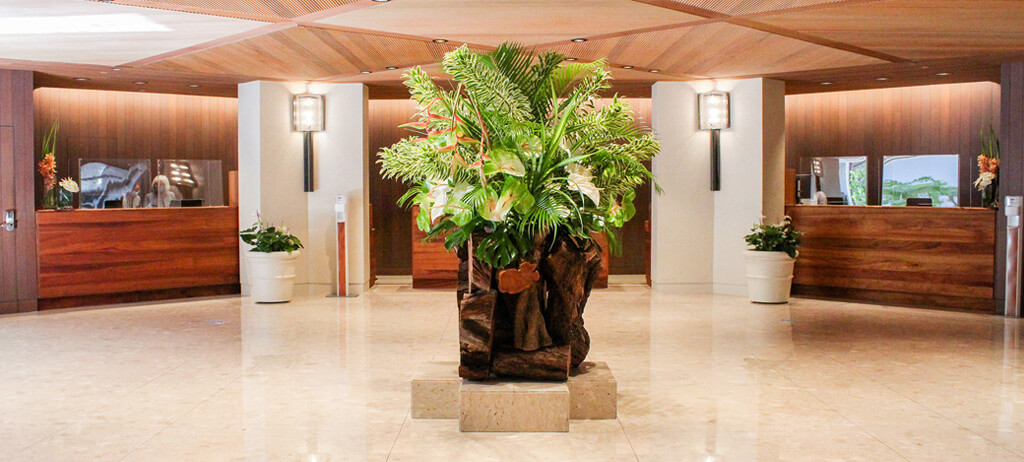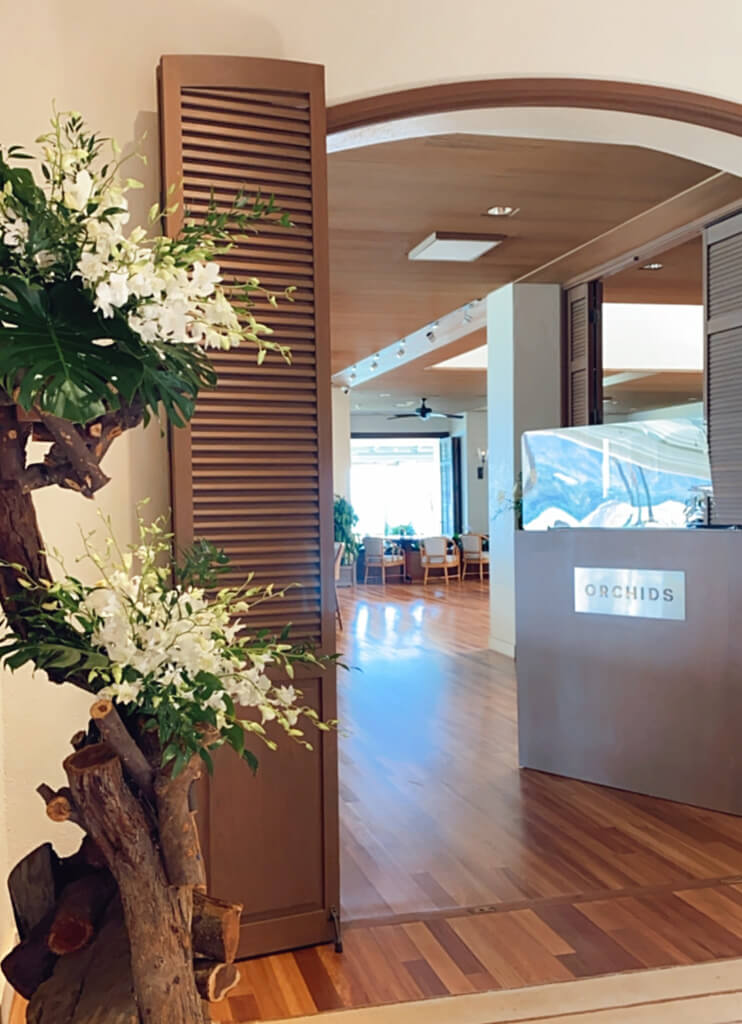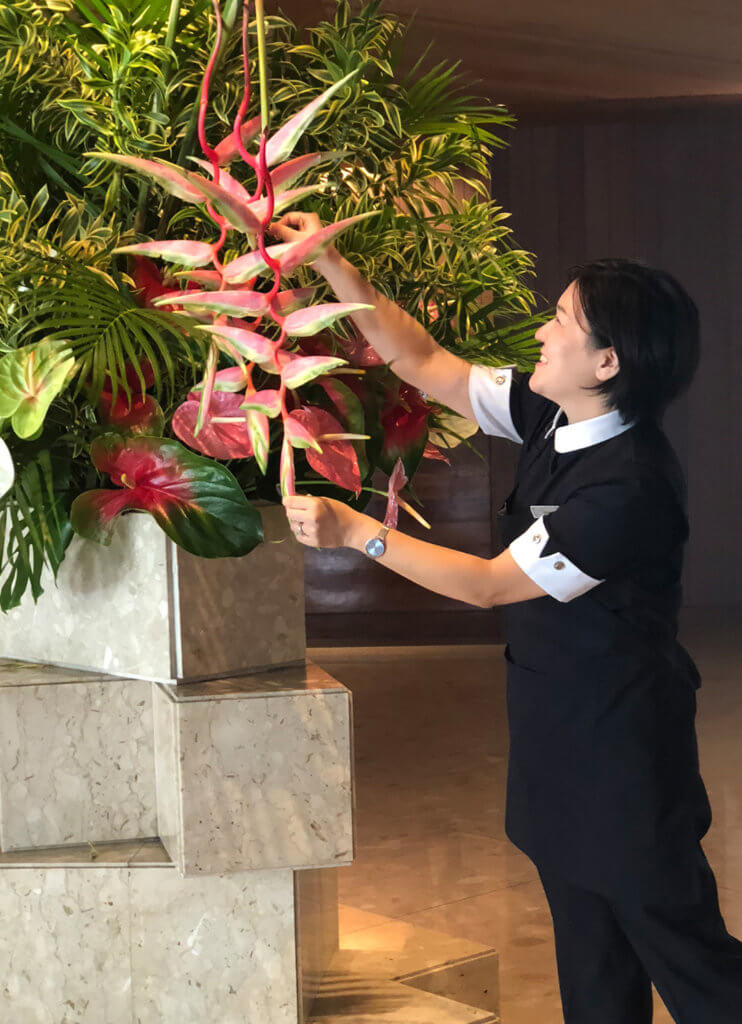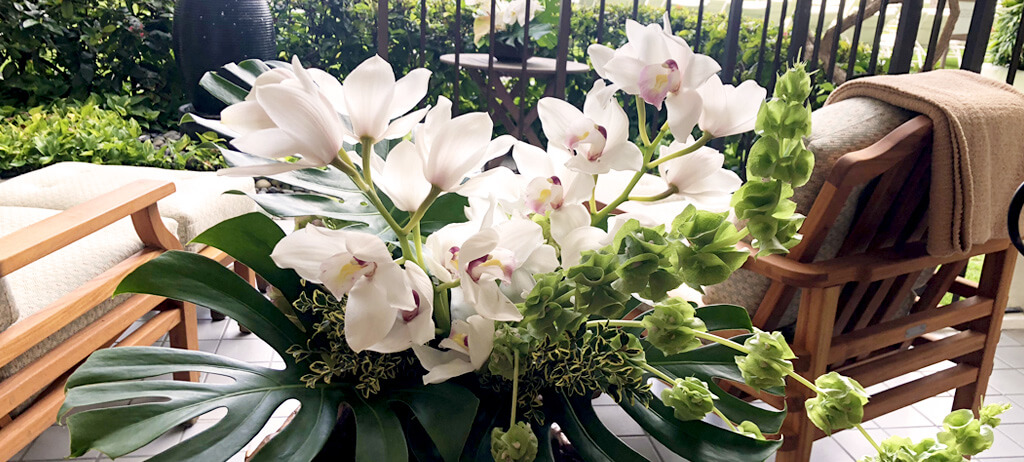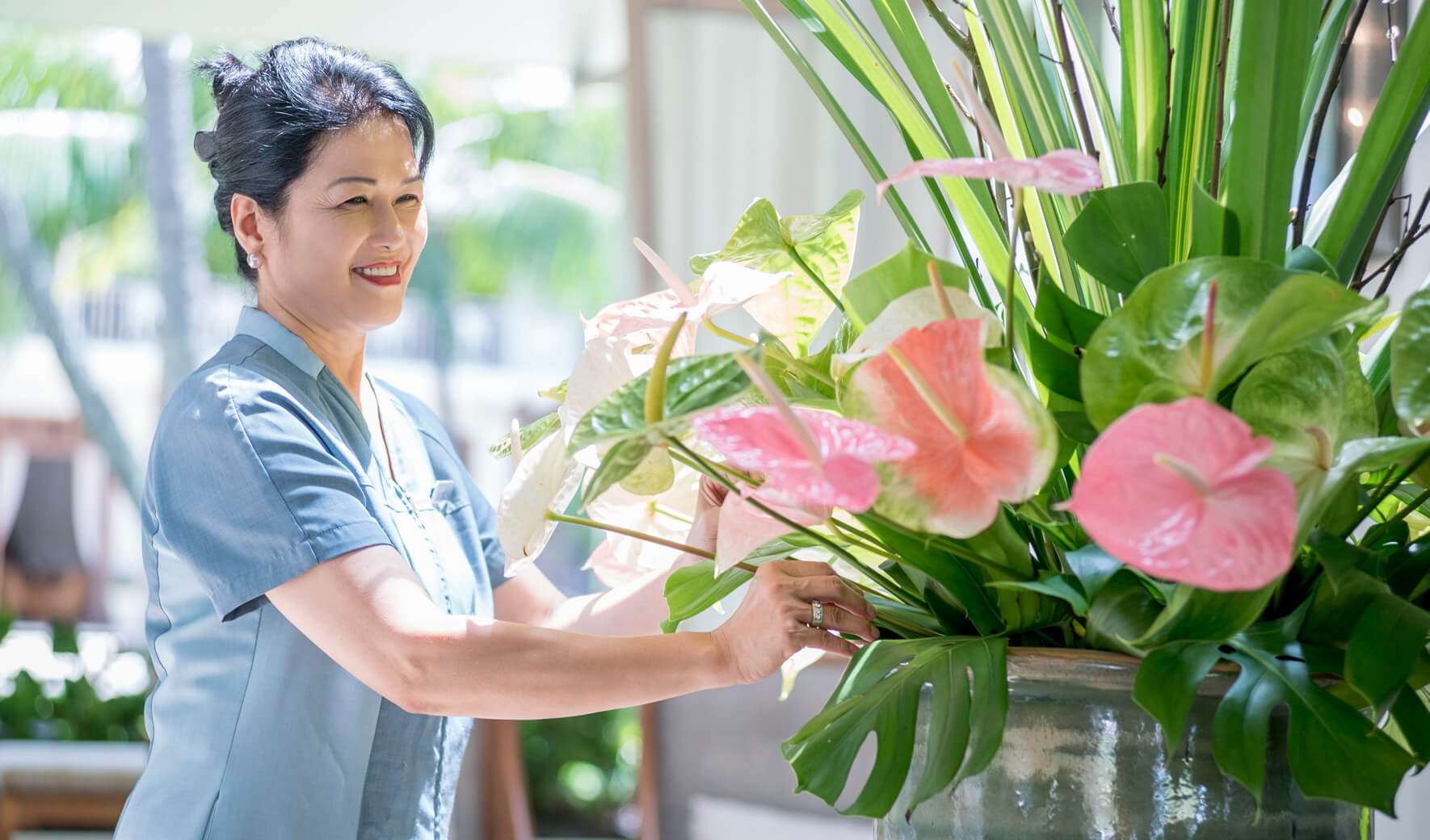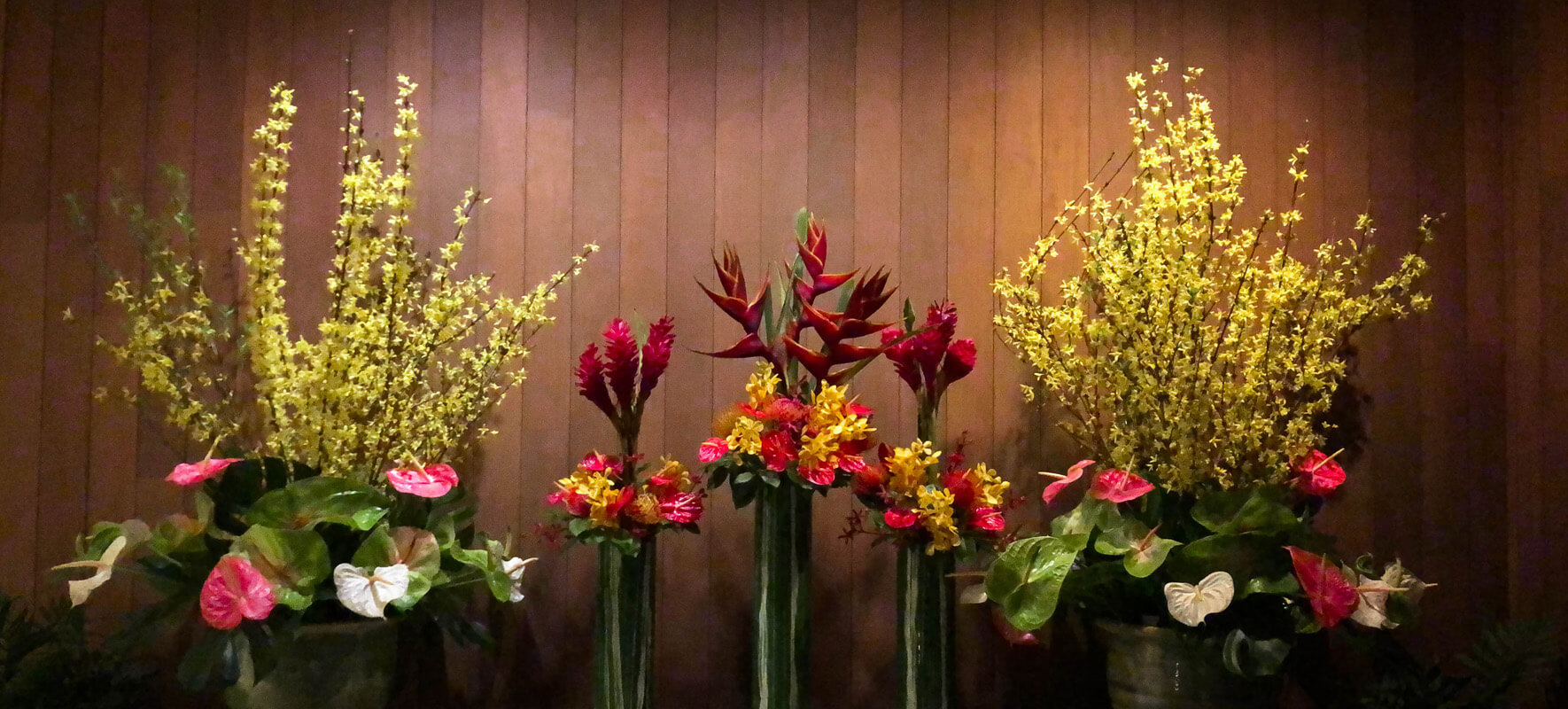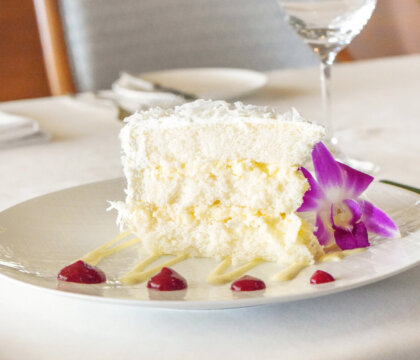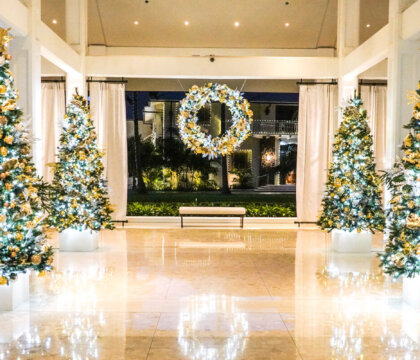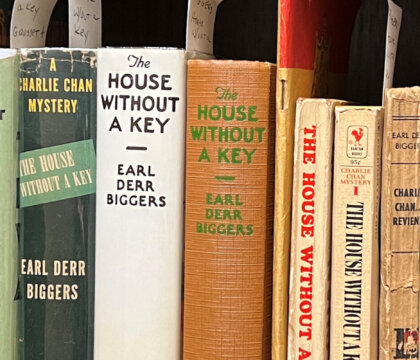Upon entering Halekulani’s lobby, guests are welcomed by a striking floral arrangement. While some may view this as a simple bouquet of flowers, there is more than meets the eye. This beautiful formal display is an artform called Ikebana – the Japanese art of flower arrangement.
Ikebana is one of the three classical Japanese arts of refinement and dates back to the Heian period in Japan from 794 – 1185. At this time, floral offerings were often made at the altar for special occasions and ceremonies. They were later used to adorn the alcove of traditional Japanese homes.
In this disciplined artform, humanity and nature are brought together, not only showcasing beautiful florals, but also highlighting other areas of the plant such as the leaves and stems to emphasize shape, line and form. Ikebana is a special Japanese art because each of the florals chosen represents time and thought – whereas a regular floral bouquet or artform may be chosen randomly. Additionally, the shape of the flower vases are an important part of Ikebana, as it helps to prolong the life of the flowers. The structure of the floral arrangement is also critical, as it is based on a scalene triangle, with no equal sides, symbolizing a trinity of heaven, human, and earth; or the trinity of sun, moon, and earth.
Outside of time and thought, seasons are also expressed through Ikebana. For example, in the spring, when high winds may prevail, the curves of the branches convey the impression of strong winds. During the summer, a lower, broader base is used to emphasize water producing a refreshing and cooler visual.
For those looking to learn more about this delicate artform, there are many schools of Ikebana to choose from. The arrangements seen at Halekulani and its sister property Halepuna Waikiki, are part of the Sogetsu School, founded by Sofu Teshigahara in 1927.
When Halekulani reopened in 1984, Masako (Tanga) Kamemoto, a Sogetsu teacher living in Oahu’s Manoa Valley, came to Halekulani every Friday morning to arrange the flowers for the following week. Her husband Kiyoshi would help her with the arrangements and built the original base for the floral designs.
Prior to returning, Tanga Kamemoto taught the staff of Halekulani’s Flower Shop the elements of Sogetsu. Thereafter, Irene Bacani, the manager of Halekulani’s Flower Shop, learned this trade and instills her knowledge in the team.
In 2018, after the iconic Kiawe Tree at House Without A Key fell, the branches were used to create a new base for the lobby centerpiece as well as in Orchids and at Halepuna Waikiki, which are updated weekly.
Have you seen the Ikebana arrangements at Halekulani before? If so, share your #HalekulaniMoment by tagging @HalekulaniHotel and learn more about the art of Ikebana via this Halekulani Living TV episode.
